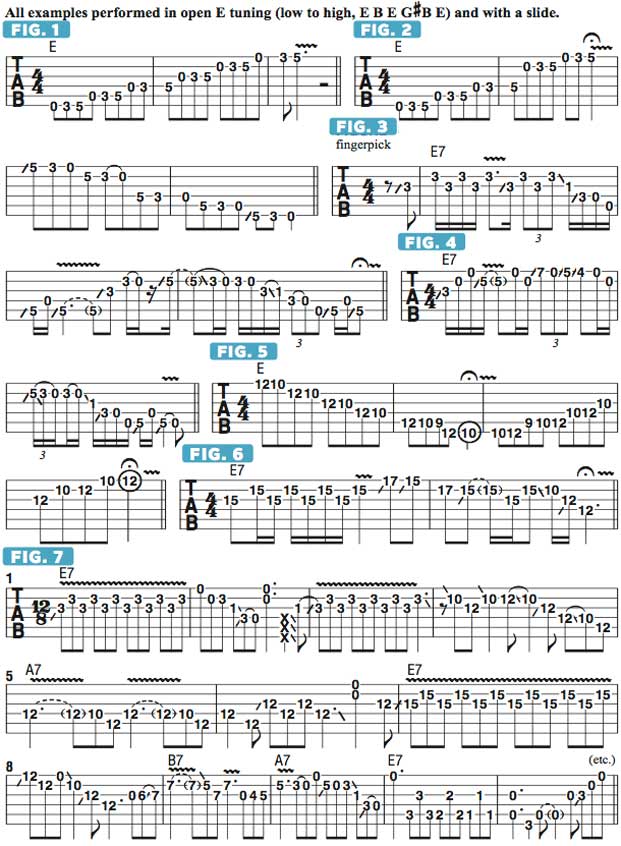Slide Guitar: Get the Most Out of Open E Tuning

Slide guitar is one of the most nuanced and expressive techniques available to guitarists for the performance of melodic lines and solos.
Using a slide affords one the ability to blur the lines between half steps and whole steps upon which western music is built. Because the frets of the guitar become irrelevant—the slide travels freely along the length of the string to create the pitches—guitarists can discover a much greater range of intervallic subtlety available at their fingertips. In this month’s column, I’d like to focus on the basic elements of slide guitar playing in open E tuning.
Open E tuning is achieved by raising the pitches of your A, D and G strings while leaving the low E, B and high E strings tuned normally. The A string is tuned up a whole step to B; the D string is tuned up a whole step to E; and the G string goes up a half step to G#.
The resultant tuning is, low to high, E B E G# B E, which is the same set of ascending pitches you get when playing a first-position E “cowboy” chord in standard tuning.
In open E tuning, major chords may be sounded by strumming across all of the strings at any given fret: when all of the open strings are strummed, an E major chord sounds. If you were to barre your index finger across all of the strings at the third fret, a G major chord sounds; barring at the fifth fret yields an A major chord, and barring at the 10th fret yields a D major chord. In this tuning, the root note of the chord is located on the sixth, fourth and first strings (they are all tuned to the same note name but are octaves apart in pitch). When using open E tuning, most slide guitarists rely on two positions for soloing: “open” position (utilizing open strings and covering the expanse of the first few frets) and 10th–12th position.
Johnny Winter once told me that, when tuned to open E, one can play solo lines by playing each open string along with the notes located at the third and fifth frets. FIGURE 1 illustrates this approach, which yields the notes of E minor pentatonic (E G A B D) along with the major third, G#, and the sixth, C#. If we omit the use of the third string, only notes from E minor pentatonic are sounded; this approach is illustrated in FIGURE 2. In a few spots, an effective device is to lay the slide across two strings at the same fret, such as sounding the G and B strings at the third fret.
FIGURE 3 offers an example of how to use this technique. Another by-product of the tuning is that, in a variety of positions, the same notes are sounded with both open strings and fretted notes. FIGURE 4 demonstrates licks that emphasize this occurrence. FIGURES 5 and 6 illustrate the patterns used for soloing higher on the fretboard, and FIGURE 7 offers a full 12-bar slide solo that moves freely between these positions.
All the latest guitar news, interviews, lessons, reviews, deals and more, direct to your inbox!
In Deep June 2016 FIGURE 1
In Deep June 2016 FIGURE 2
In Deep June 2016 FIGURE 3
In Deep June 2016 FIGURE 4
In Deep June 2016 FIGURE 5
In Deep June 2016 FIGURE 6
In Deep June 2016 FIGURE 7

Guitar World Associate Editor Andy Aledort is recognized worldwide for his vast contributions to guitar instruction, via his many best-selling instructional DVDs, transcription books and online lessons. Andy is a regular contributor to Guitar World and Truefire, and has toured with Dickey Betts of the Allman Brothers, as well as participating in several Jimi Hendrix Tribute Tours.

